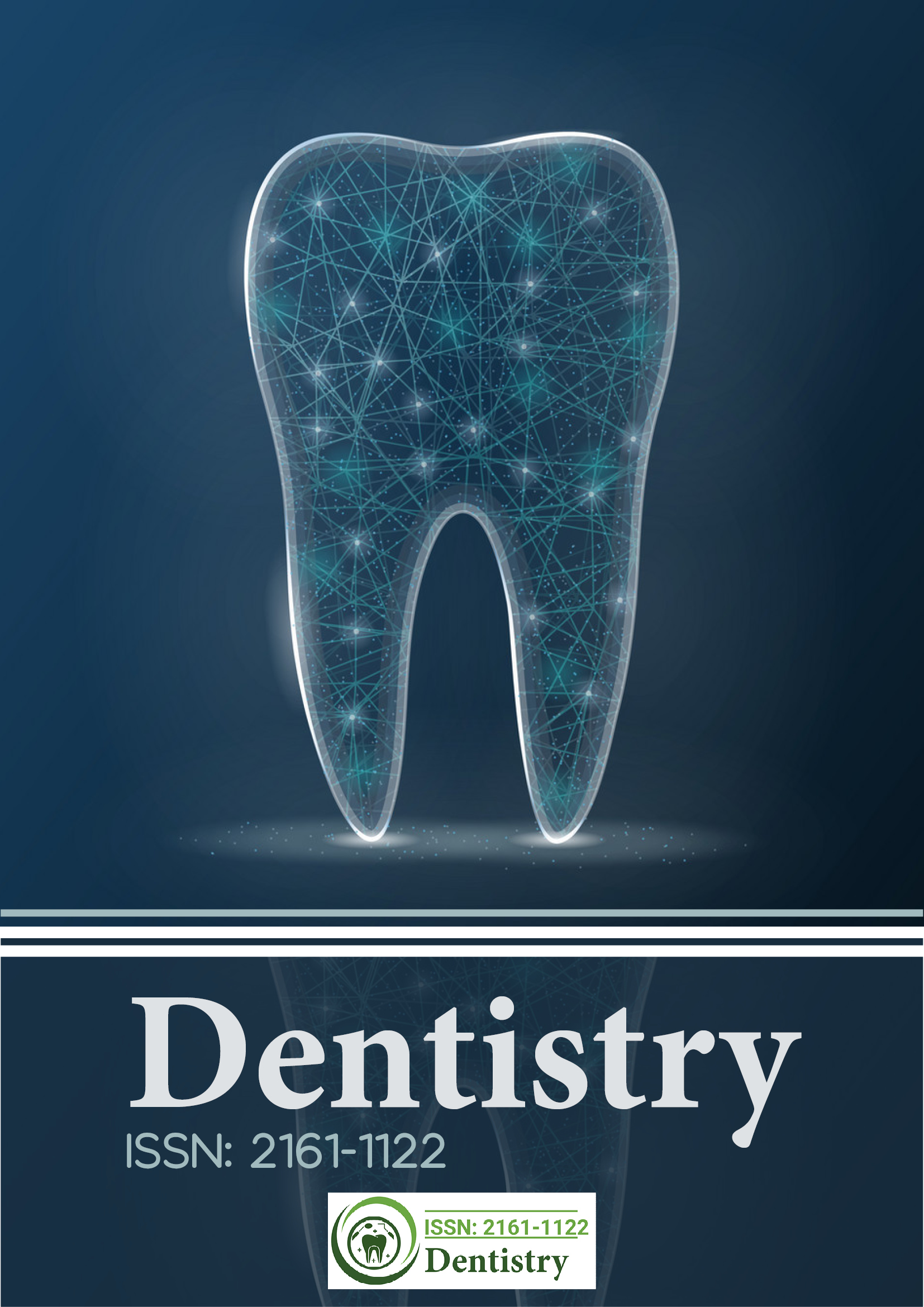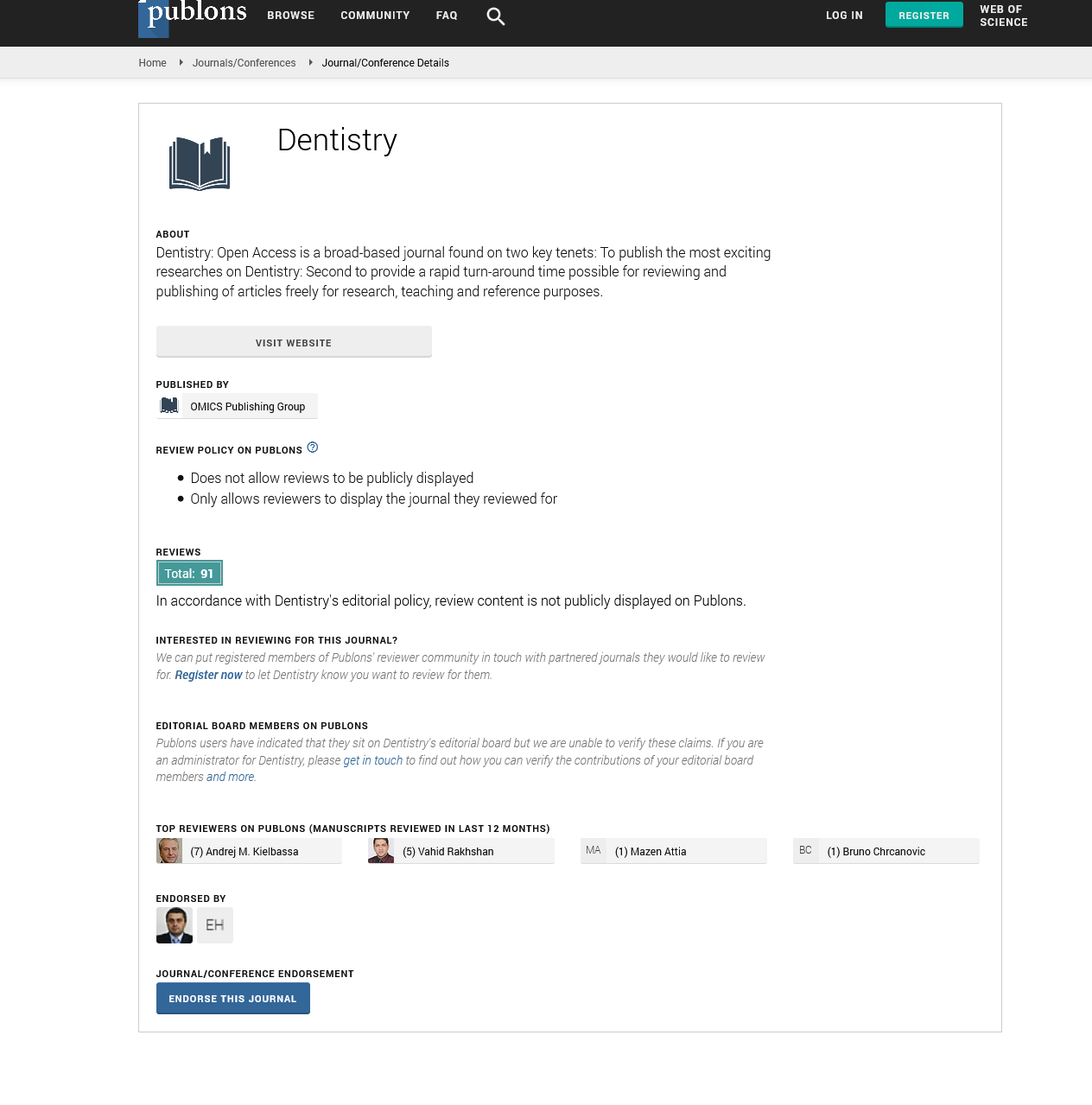Citations : 2345
Dentistry received 2345 citations as per Google Scholar report
Indexed In
- Genamics JournalSeek
- JournalTOCs
- CiteFactor
- Ulrich's Periodicals Directory
- RefSeek
- Hamdard University
- EBSCO A-Z
- Directory of Abstract Indexing for Journals
- OCLC- WorldCat
- Publons
- Geneva Foundation for Medical Education and Research
- Euro Pub
- Google Scholar
Useful Links
Share This Page
Journal Flyer

Open Access Journals
- Agri and Aquaculture
- Biochemistry
- Bioinformatics & Systems Biology
- Business & Management
- Chemistry
- Clinical Sciences
- Engineering
- Food & Nutrition
- General Science
- Genetics & Molecular Biology
- Immunology & Microbiology
- Medical Sciences
- Neuroscience & Psychology
- Nursing & Health Care
- Pharmaceutical Sciences
Contemporary treatment of temporo-mandibular joint dysfunction and bruxism (grinding and clenching of teeth)
3rd International Conference on Advanced Dental Education
November 15-16, 2018 | Edinburgh, Scotland
Fareed Khan
Centre for Observational Oceanography, USA
Posters & Accepted Abstracts: Dentistry
Abstract:
Treatment of temporo-mandibular joint dysfunction (TMD) and bruxism remain a source of confusion for both dentists and patients. Current treatments recommended are palliative and designed to ease the symptoms, but cannot effect a cure. This is due to a lack of understanding of the causes of TMD and bruxism and hence an inability to formulate an effective treatment strategy. The prevalence of bruxism has been reported as 8% to 31.4% of the general population and the prevalence of temporomandibular joint disorder (TMD) is between 5% and 12%. Hence up to 40% of the population may suffer from either or both conditions. Current treatments are palliative and involve jaw rests and splints. The aim of this presentation is to present a novel technique for treating both conditions. The invisalign system is used using computer modeling to design appliances to permanently reposition the mandible, such that strain on the TMJ is relieved, as well as the muscles of mastication are brought into a resting state, so that both the TMD and grinding and clenching are treated. The aim is to affect a permanent cure, by addressing the underlying cause of both TMD and parafunction. Average treatment time is 18-24 months, after which no further therapy is required, although night time retainers are provided. Case reports will be presented as evidence to support the efficacy of the treatment. Many cases have been treated and all have reported either complete resolution of their symptoms or significant improvement such that the symptoms are infrequent and mild. No relapse has been reported so far.
Biography :
E-mail: fareedkhan11@gmail.com

